30 years of history of handheld game consoles
 Bashny.Net
Bashny.Net
30 years ago, Milton Bradley (Milton Bradley) introduced the world's first portable video game systems with replaceable cartridges - Microvision. Until 1979 mobile gaming devices were limited to a single program or a fixed set. After the debut of Nintendo Game Boy a decade later, the market based on the cartridge consoles exploded. To date, the industry of mobile electronic entertainment has grown to enormous proportions, and before the advent of products such as PSP, she experienced many examples of ups and downs.
17 photo. Source
1. Milton Bradley Microvision (1979)
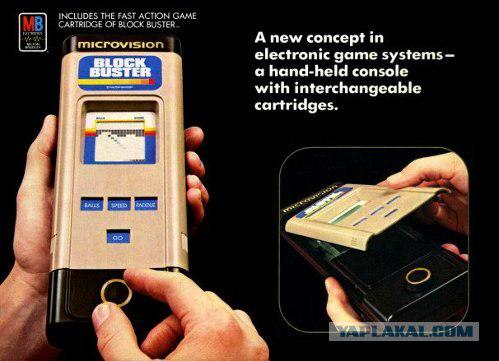
2. Entex Select-A-Game Machine (1981)
This plain device fills the gap between portable consoles and desktop solutions. Entex SAG has developed a two-player system when it was supposed to be located on any surface. However, one player could easily hold it in your hands. "Vacuum Fluorescent Display" comprises an array of 7 x 16 elements. The Company issued a total of six cartridges for SAG, most of them - a different version of Pac-Man and Space Invaders.

3. Epoch Game Pocket Computer (1984)
In a sense, this "pocket computer game" was a precursor to Nintendo Game Boy. Sold only in Japan the console was black-and-white LCD display without backlight with a resolution of 75 x 64 and has worked with small removable cartridges. The design embodies a similar style game with gamepad on the sides of the two types of controls. Japanese consumers have not taken this product and Epoch had to scale back production after the release of the five games.
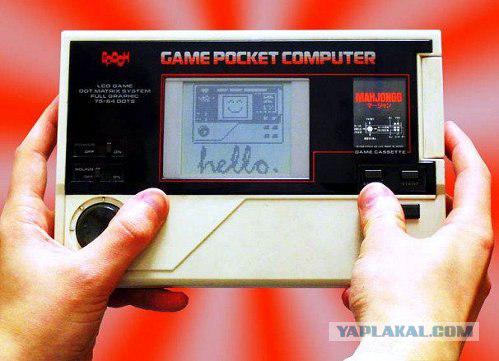
4. Nintendo Game Boy (1989)
Extremely popular device came on the market 20 years ago. With long-time battery life, and such hits as Tetris, the company managed to sell over 100 million models of the original series Game Boy (excluding Game Boy Advance) worldwide to date, making the console is one of the most popular products in the history of the video game industry . The hardware is a 4-MHz processor, the display is 160 x 144, 8 KB of main memory and 8 KB of video memory.
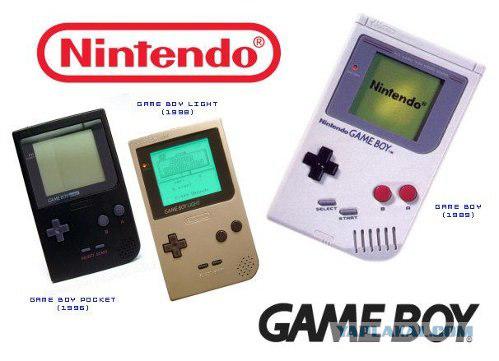
5. Atari Lynx (1989)
Like the Game Boy, Atari Lynx celebrates its 20th anniversary. This is the first portable game console with a color LCD screen. Initially, the unit was called Handy Boy, when developed by Epyx. In 1989, Atari bought it and renamed the device Lynx («Lynx"). In 1991 he was presented the second model series - Lynx II, has a more compact size.

6. NEC TurboExpress (1990)
Console TurboExpress is notable for being the first portable model for working with cartridges from the usual home consoles, in this case, the TurboGrafx-16. However, she was not cheap - $ 250 in 1990, equivalent to $ 413 today.

7. Sega Game Gear (1990)
The Game Gear technology used, which is based on the work of the 8-bit Sega Master System. Portable Console with a color screen was relatively affordable in terms of cost and in great demand, than TurboExpress and Atari Lynx, in particular, because of the support of popular games like Sonic. It is also not excluded the effect of "halo" over production because of its successful Sega home console Genesis.
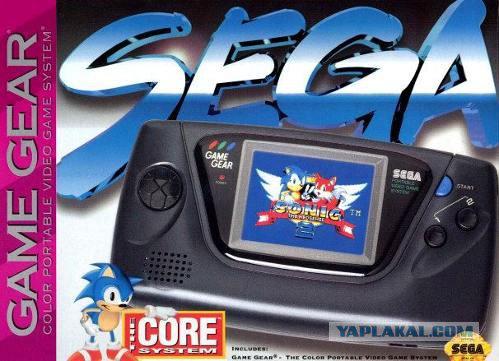
8. Sega Genesis Nomad (1995)
Sega introduced a large and quickly "eat" Nomad battery console in not the most successful period for the company. The market was oversaturated with multiple incompatible platforms: Genesis, Sega CD, 32X, 32X CD, Game Gear, Pico and Master System. As a result, sales fell short of expectations, even though the system was the "highlight": as TurboExpress, she supported the work with cartridges from their desktop consoles manufacturer - Sega Genesis.
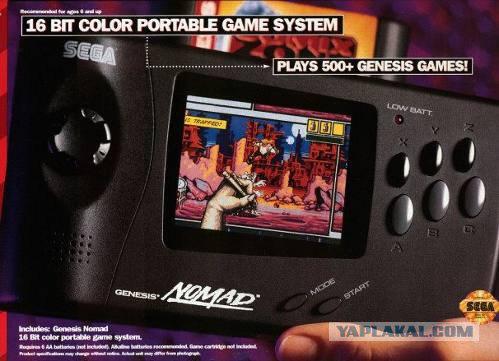
9. Tiger Game.com (1997)
In 1997, Tiger Electronics has been an influential player in the market of portable consoles, so its intention to compete with the Nintendo Game Boy was not surprised. The new "blockbuster" was supposed to be the product Game.com - the first device with a touchscreen and support for the network. However, the possibility is not enough to declare: the functionality does not differ convenience, since access to the Internet require a separate toner cartridge and modem cable does not fit into the concept of the portable solutions. A year later appeared modification called Pocket Pro, which costs had to be reduced to $ 30. However, due attention of consumers and this step is not attracted.
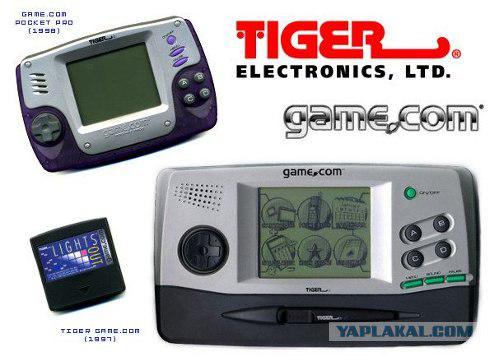
10. Nintendo Game Boy Color (1998)
Nine years after entering the market Game Boy Nintendo introduced a version of the console with a color screen. Illumination is still missing, but this deficiency was compensated by the relatively low cost and long battery life. The device maintains compatibility with its predecessor and extend Nintendo's dominance of the market for mobile gaming platforms for several years.
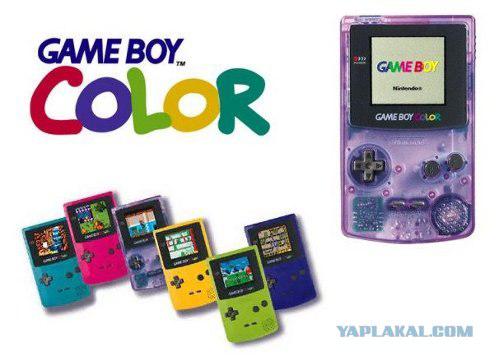
11. SNK Neo Geo Pocket Color (1999)
In 1998, SNK released its first portable console Neo Geo Pocket in Japan. Monochrome display looked outdated, and a year later there was a Neo Geo Pocket Color (NGPC), delivery of which is on a global scale. Almost a decade NGPC competes series of Game Boy through quality software long battery life without recharging and low cost. However, the advantage in the game content is still on the side of Game Boy.
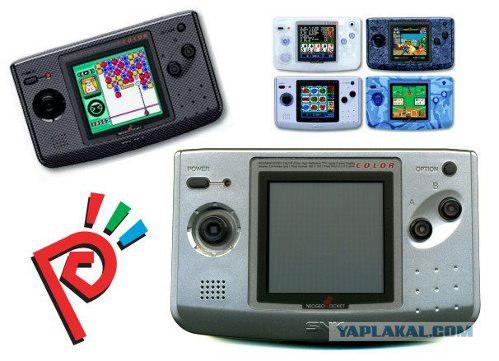
12. Nintendo Game Boy Advance (2001)
By 2000, the previous model line of Game Boy is not match the level of market demand from the portable consoles of having full color screen. In 2001, Nintendo released Game Boy Advance with 32-bit color display, but again without illumination. Unlike the Game Boy Color with 56 simultaneously displays the color modified version supports 512. In 2003, the developers have finally added a highlight in the "clamshell» Game Boy SP, and the ultraportable model Game Boy Micro was released in 2005.
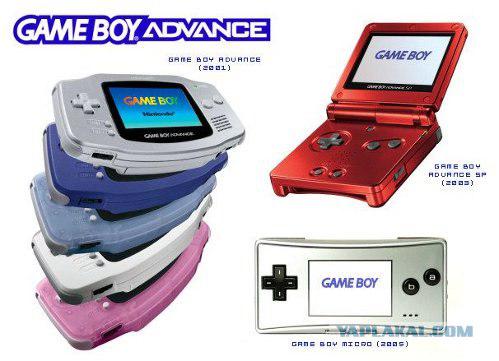
13. Game Park GP32 (2001)
GP32 from the Korean company Game Park remembered that it was the first console for which the developers were able to create and distribute their own applications. Game stored on standard storage media SmartMedia. Under this platform in a short time were written emulators, allows you to run games from other (usually older) systems.

14. Nokia N-Gage (2003) and Tiger Telematics Gizmondo (2005)
These were two different mobile devices connected to the failed sale. The N-Gage attended function consoles and mobile phones, and none of them did not reach the level of implementation in the existing market separate solutions. A Gizmondo killed ill-conceived marketing campaign, even though the hardware looked promising: CPU Samsung ARM9 400MHz, 128-bit graphics accelerator NVIDIA GeForce 3D 4500, 64 MB of memory, support for Bluetooth, GSM, GPRS, GPS.

15. Nintendo DS (2004)
Wishing to continue the tradition of multi-million selling series devices Game Boy, the company introduced in 2004, DS - the console with two screens, one of which was the touch. Many skeptics believe this decision excessive and predicted the failure of the product, but the last laugh Nintendo: to date, sales of the device was 113, 48 million units globally. In 2006, followed by a more compact model DS Lite.
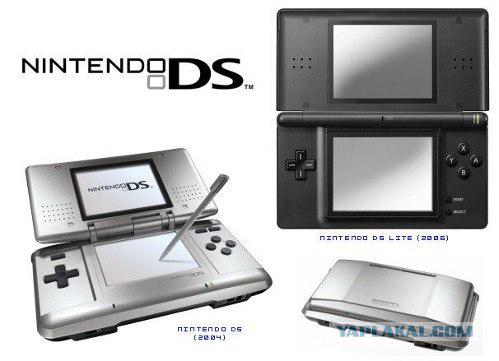
16. Sony PlayStation Portable (2004)
Known PlayStation brand is almost guaranteed that the new Sony console will be a strong competitor for the Nintendo DS. Many critics have noted the probability of winning the PSP dispute for first place in the mobile gaming platform because of the quality of implementation of graphics, multimedia and networking capabilities. However, DS PSP bypassed in the ratio 2: 1 by the number of sales. There are three versions of PSP: PSP-2000 (introduced in 2007), PSP-3000 (2008) and the PSP Go.

17. Present and Future
In the current generation of portable line between computers, multimedia devices and game consoles blurred, including through the Internet through a wireless interface and distribution of games through the World Wide Web - the possibilities are used by the iPhone and iPod Touch. The success of the App Store prompted Nintendo and Sony to implement online features in Nintendo DSi and PSP Go, respectively.

Source:
17 photo. Source
1. Milton Bradley Microvision (1979)

2. Entex Select-A-Game Machine (1981)
This plain device fills the gap between portable consoles and desktop solutions. Entex SAG has developed a two-player system when it was supposed to be located on any surface. However, one player could easily hold it in your hands. "Vacuum Fluorescent Display" comprises an array of 7 x 16 elements. The Company issued a total of six cartridges for SAG, most of them - a different version of Pac-Man and Space Invaders.

3. Epoch Game Pocket Computer (1984)
In a sense, this "pocket computer game" was a precursor to Nintendo Game Boy. Sold only in Japan the console was black-and-white LCD display without backlight with a resolution of 75 x 64 and has worked with small removable cartridges. The design embodies a similar style game with gamepad on the sides of the two types of controls. Japanese consumers have not taken this product and Epoch had to scale back production after the release of the five games.

4. Nintendo Game Boy (1989)
Extremely popular device came on the market 20 years ago. With long-time battery life, and such hits as Tetris, the company managed to sell over 100 million models of the original series Game Boy (excluding Game Boy Advance) worldwide to date, making the console is one of the most popular products in the history of the video game industry . The hardware is a 4-MHz processor, the display is 160 x 144, 8 KB of main memory and 8 KB of video memory.

5. Atari Lynx (1989)
Like the Game Boy, Atari Lynx celebrates its 20th anniversary. This is the first portable game console with a color LCD screen. Initially, the unit was called Handy Boy, when developed by Epyx. In 1989, Atari bought it and renamed the device Lynx («Lynx"). In 1991 he was presented the second model series - Lynx II, has a more compact size.

6. NEC TurboExpress (1990)
Console TurboExpress is notable for being the first portable model for working with cartridges from the usual home consoles, in this case, the TurboGrafx-16. However, she was not cheap - $ 250 in 1990, equivalent to $ 413 today.

7. Sega Game Gear (1990)
The Game Gear technology used, which is based on the work of the 8-bit Sega Master System. Portable Console with a color screen was relatively affordable in terms of cost and in great demand, than TurboExpress and Atari Lynx, in particular, because of the support of popular games like Sonic. It is also not excluded the effect of "halo" over production because of its successful Sega home console Genesis.

8. Sega Genesis Nomad (1995)
Sega introduced a large and quickly "eat" Nomad battery console in not the most successful period for the company. The market was oversaturated with multiple incompatible platforms: Genesis, Sega CD, 32X, 32X CD, Game Gear, Pico and Master System. As a result, sales fell short of expectations, even though the system was the "highlight": as TurboExpress, she supported the work with cartridges from their desktop consoles manufacturer - Sega Genesis.

9. Tiger Game.com (1997)
In 1997, Tiger Electronics has been an influential player in the market of portable consoles, so its intention to compete with the Nintendo Game Boy was not surprised. The new "blockbuster" was supposed to be the product Game.com - the first device with a touchscreen and support for the network. However, the possibility is not enough to declare: the functionality does not differ convenience, since access to the Internet require a separate toner cartridge and modem cable does not fit into the concept of the portable solutions. A year later appeared modification called Pocket Pro, which costs had to be reduced to $ 30. However, due attention of consumers and this step is not attracted.

10. Nintendo Game Boy Color (1998)
Nine years after entering the market Game Boy Nintendo introduced a version of the console with a color screen. Illumination is still missing, but this deficiency was compensated by the relatively low cost and long battery life. The device maintains compatibility with its predecessor and extend Nintendo's dominance of the market for mobile gaming platforms for several years.

11. SNK Neo Geo Pocket Color (1999)
In 1998, SNK released its first portable console Neo Geo Pocket in Japan. Monochrome display looked outdated, and a year later there was a Neo Geo Pocket Color (NGPC), delivery of which is on a global scale. Almost a decade NGPC competes series of Game Boy through quality software long battery life without recharging and low cost. However, the advantage in the game content is still on the side of Game Boy.

12. Nintendo Game Boy Advance (2001)
By 2000, the previous model line of Game Boy is not match the level of market demand from the portable consoles of having full color screen. In 2001, Nintendo released Game Boy Advance with 32-bit color display, but again without illumination. Unlike the Game Boy Color with 56 simultaneously displays the color modified version supports 512. In 2003, the developers have finally added a highlight in the "clamshell» Game Boy SP, and the ultraportable model Game Boy Micro was released in 2005.

13. Game Park GP32 (2001)
GP32 from the Korean company Game Park remembered that it was the first console for which the developers were able to create and distribute their own applications. Game stored on standard storage media SmartMedia. Under this platform in a short time were written emulators, allows you to run games from other (usually older) systems.

14. Nokia N-Gage (2003) and Tiger Telematics Gizmondo (2005)
These were two different mobile devices connected to the failed sale. The N-Gage attended function consoles and mobile phones, and none of them did not reach the level of implementation in the existing market separate solutions. A Gizmondo killed ill-conceived marketing campaign, even though the hardware looked promising: CPU Samsung ARM9 400MHz, 128-bit graphics accelerator NVIDIA GeForce 3D 4500, 64 MB of memory, support for Bluetooth, GSM, GPRS, GPS.

15. Nintendo DS (2004)
Wishing to continue the tradition of multi-million selling series devices Game Boy, the company introduced in 2004, DS - the console with two screens, one of which was the touch. Many skeptics believe this decision excessive and predicted the failure of the product, but the last laugh Nintendo: to date, sales of the device was 113, 48 million units globally. In 2006, followed by a more compact model DS Lite.

16. Sony PlayStation Portable (2004)
Known PlayStation brand is almost guaranteed that the new Sony console will be a strong competitor for the Nintendo DS. Many critics have noted the probability of winning the PSP dispute for first place in the mobile gaming platform because of the quality of implementation of graphics, multimedia and networking capabilities. However, DS PSP bypassed in the ratio 2: 1 by the number of sales. There are three versions of PSP: PSP-2000 (introduced in 2007), PSP-3000 (2008) and the PSP Go.

17. Present and Future
In the current generation of portable line between computers, multimedia devices and game consoles blurred, including through the Internet through a wireless interface and distribution of games through the World Wide Web - the possibilities are used by the iPhone and iPod Touch. The success of the App Store prompted Nintendo and Sony to implement online features in Nintendo DSi and PSP Go, respectively.

Source:
Tags
See also
As in 1992, were wearable device of the future? An excursion into the world of gadgets in 1992 and 2003
"The father of video games" has died at the age of 92 years
Game controller PhoneJoy Play
20 gaming consoles, not accepted by the market
The very first in the world of gadgets
A wide range of Chinese gaming consoles
David Graber — Duty. The first 5,000 years of history
4 billion years of the history of Mars in two minutes
The story of the adventures of a cat in the picture.
Gamepad for tablet

















